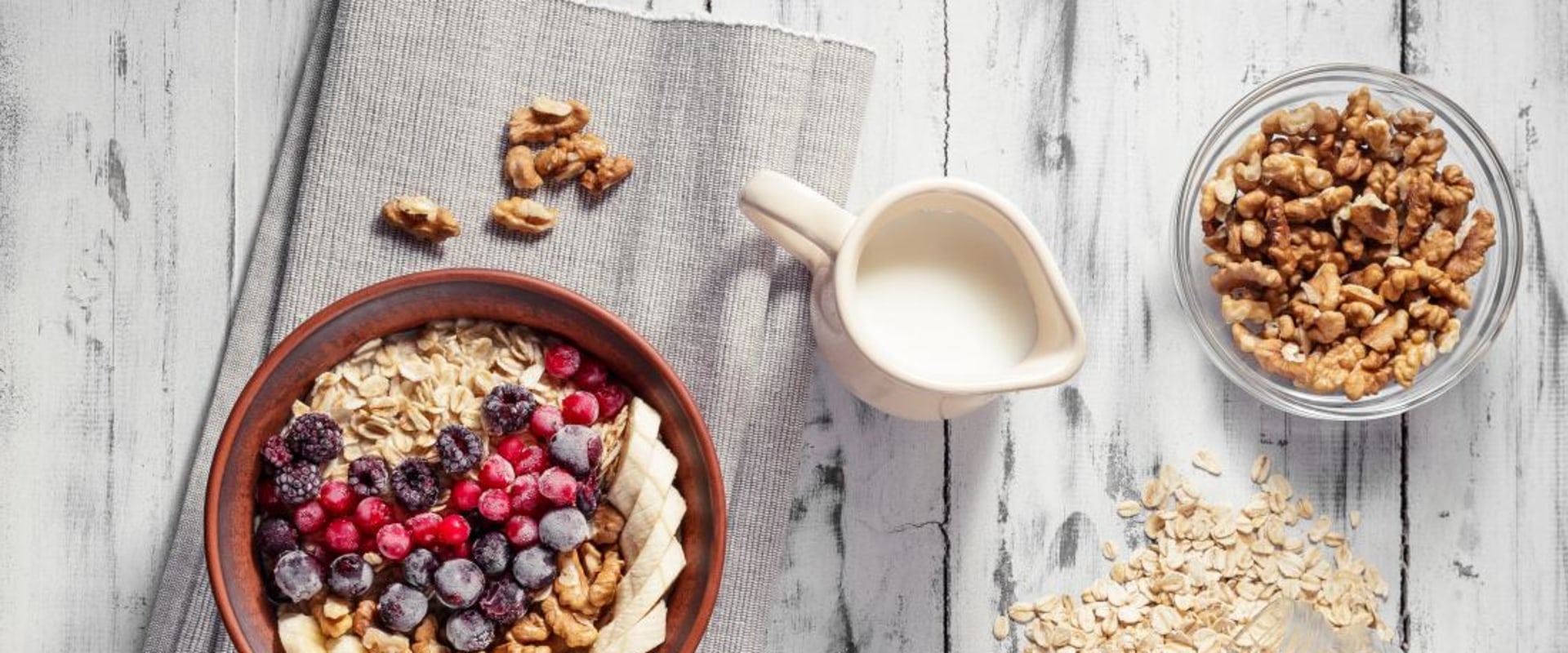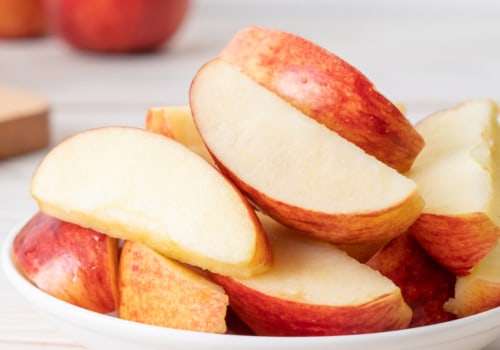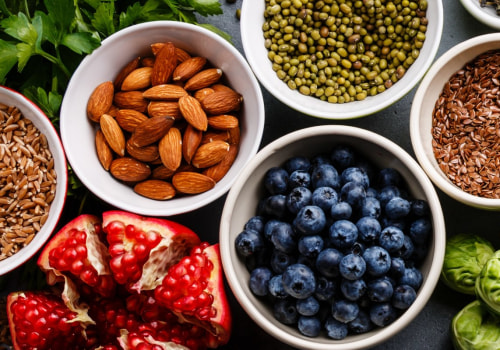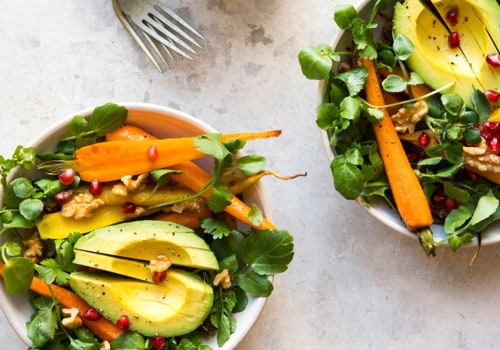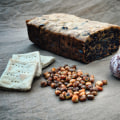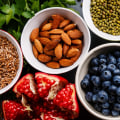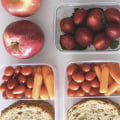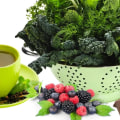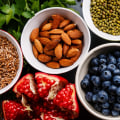Broccoli provides good amounts of fiber, calcium, potassium, folic acid and phytonutrients. Apples are an excellent source of antioxidants, which fight free radicals. If you're like most people who set out to make a New Year's resolution, you want to eat healthier, lose weight, or both. And if you're like most of us, your resolve has already begun to falter.
By February 1, most weight-related New Year's resolutions had been thwarted by unrealistic expectations, fad diets, frustration at not seeing results, and a host of other factors. Fat tends to get a bad reputation, but the body needs it to absorb vitamins A, D, E and K, not to mention to heal wounds. Fat is also the most slowly digested macronutrient (the order is carbohydrates, proteins and fats), so it promotes satiety and adds flavor to foods. Healthy eating and sustainable weight loss go beyond counting calories.
It's also more than just a matter of eating less and moving more. A variety of complex physiological and lifestyle-related factors contribute to how we gain weight and why each of us gains it differently. Drink 8 to 12 cups of water a day. Eat dark green vegetables at least three to four times a week.
Good options include broccoli, peppers, Brussels sprouts, and leafy greens such as kale and spinach. Eat whole grains at least two to three times a day. Look for whole wheat flour, rye, oats, barley, amaranth, quinoa, or a multigrain. A good source of fiber has 3 to 4 grams of fiber per serving.
A good source contains 5 or more grams of fiber per serving. Try to eat a bean-based meal at least once a week. Try adding legumes, such as beans and lentils, to soups, stews, stews, salads and sauces or eat them on their own. Try to eat two to three servings of fish a week.
One serving consists of 3 to 4 ounces of cooked fish. Good options are salmon, trout, herring, blue fish, sardines and tuna. Include two to four servings of fruit in your diet each day. Try eating berries such as raspberries, blueberries, blackberries and strawberries.
Men and women between the ages of 19 and 50 need 1,000 milligrams of calcium a day, and 1,200 milligrams if they are 50 or older. Eat calcium-rich foods, such as low-fat or low-fat dairy products, three to four times a day. Check out this list of calcium-rich foods. You'll find a breakdown of the calcium content in several vegetables, fruits, nuts, legumes, cereals, fish, and more.
Soy contains isoflavones, genistein and diadzen, which are not found in any other food and have been shown to lower blood cholesterol and slow bone loss. Salmon is a type of blue fish that is incredibly popular because of its excellent taste and high content of nutrients, including protein and omega-3 fatty acids. It also contains some vitamin D. Trout is another type of delicious freshwater fish, similar to salmon.
They are loaded with carotenoids and are a good source of potassium and fiber. Toss the sweet potato slices with a little olive oil and roast until tender and lightly browned. Sprinkle with one or two spices, such as cinnamon or chili. Fat-free sugar-free Greek yogurt (0%) has a pleasant acidity that is a perfect complement to the natural sweetness of berries, bananas, or your favorite whole grain cereal.
It's strained, so even versions with 0% fat are thick and creamy. And the liquid lost means that the remaining yogurt has twice as much protein as regular yogurt (but less calcium), about 15 grams in 5 ounces of plain Greek yogurt at 0%. Whether fast, old-fashioned, or steel-cut, oatmeal makes for a hearty whole-grain breakfast. Every ½ cup (dry) of rolled oats has 4 grams of fiber, and about half of it is the soluble type that helps lower cholesterol.
Top cooked oatmeal with slices of toasted almonds and bananas instead of sugar or salt. Or try the diced apple with cinnamon and raisins, or the diced pear with walnuts and nutmeg. They are rich in protein, fiber, copper, folic acid, iron, magnesium, potassium and zinc. But chickpeas stand out because they are so versatile.
Look for varieties without added salt, such as Whole Foods 365, in boxes. Add a handful to your mixed salad or mix them with your vegetable stews, curries and soups. Watermelon is a heavyweight in the nutrition department. A standard serving (approximately 2 cups) contains one-third of a day's vitamins A and C, a good dose of potassium, and a healthy dose of lycopene with only 90 calories without fat or salt.
And when they're in season, watermelons are usually grown locally, meaning they may have a smaller carbon footprint than other fruits. Whether you want to review your diet or simply change your meals, it's easy to add several of these foods to your routine. They are based on the best available science on the types and quantities of foods and dietary patterns that are believed to promote health and well-being and reduce the risk of chronic diseases and diet-related diseases. Examples of foods with a high glycemic index are white and whole wheat bread, processed cereals, short grain rice, potatoes, crackers and watermelon.
However, if these foods regularly replace the most nutritious and healthy foods in the diet, the risk of developing obesity and chronic diseases, such as heart disease, stroke, type 2 diabetes and some forms of cancer, increases. Australian dietary guidelines recommend eating one to three servings of foods from this group each day, depending on your age. Because different foods provide different types and amounts of key nutrients, it's important to choose a variety of foods from each food group. Ghrelin is the body's “I'm hungry” hormone, which is suppressed when the stomach is full, so eating satiating foods that are high in fiber and protein is a no-brainer.
Healthy eating means eating a wide variety of foods from each of the 5 major food groups, in recommended amounts. The Australian Guide to Healthy Eating describes how many servings you and your family need each day, and standard serving sizes for food and beverages. Eating a variety of foods from the 5 main food groups provides a variety of different nutrients to the body, promotes good health and can help reduce the risk of disease, in addition to maintaining an interesting diet with different flavors and textures. Eating a varied and well-balanced diet means eating a variety of foods from each of the 5 food groups daily, in the recommended amounts.
Whole-grain or whole foods, such as whole wheat bread, brown rice, quinoa and oats, are better for you than refined grain (cereal) foods because they provide more dietary fiber, vitamins and minerals. Now, you'll have the latest and greatest news about food and healthy eating in your inbox every day. Many of the foods mentioned above are not only a great snack, but they're also packed with vitamins and antioxidants. These foods are called “discretionary choices” (sometimes referred to as “junk food”) and should only be eaten occasionally.
. .
